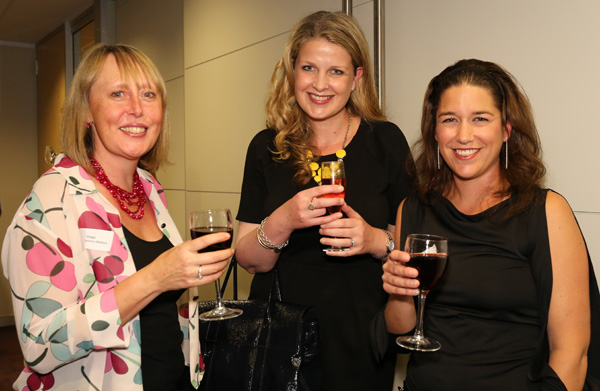Since pioneering the relocatable partition early in its history, Clestra has continued to stand at the forefront of innovation. As the company marks its centenary this year, its General Manager for Southeast Asia, Gilles Marino, tells us how they are leading the way.

April 24th, 2013
Clestra was established in 1913 by Earl J. Hauserman. A building contractor by trade, Hauserman’s revolutionary idea of a ‘relocatable partition’ – conceived during the era of the first modern skyscrapers – soon went on to inspire change in management practices and the utilisation of space.
The concept of monoblock system panels that could be easily and safely installed and re-erected on site was one that was quickly embraced by developers and companies alike; two of the first buildings to feature Hauserman’s relocatable partition were the iconic Chrysler Building (1930) and the Empire State Building (1931).

Baosteel, Shanghai
Clestra’s General Manager for Southeast Asia, Gilles Marino, highlights that the principle of the relocatable partition remains the same one hundred years on. “It shows that the concept of increased efficiency through re-use rather than replacement is more alive than ever,” says Marino.

Baosteel, Shanghai
Together with increased efficiency comes increased safety as less work is done on site, and Marino believes these factors are particularly important in Singapore where Clestra’s Southeast Asia’s office is based.

Baosteel, Shanghai
He adds that the government’s move to reduce foreign manpower and the increase in labour costs have also impacted the product’s evolution.
“Clients are looking for factory pre-assembled products that are easier and faster to install, so our product design has continued to evolve to better meet these needs. For example, Metropolines 1, the new monoblock panel that we have just released, has been developed to be even faster to install than the previous models.”

The upcoming Kai Tak Cruise Terminal, Hong Kong
Clestra, which has R&D facilities in France and Korea as well as four factories around the world, typically releases a new product every year. Given the company’s design and manufacturing capabilities, it is also able to offer product customisation to clients.
Custom projects include a recently completed 360 degree curved structure for Baosteel in Shanghai; the ongoing project for Credit Suisse in Singapore at Changi Business Park involving monoblock relocatable partitions made of wood and glass; and freestanding, reconfigurable partitions for the upcoming Sir Norman Foster-designed Kai Tak Cruise Terminal in Hong Kong.

DBS MBFC, Singapore
“With two of our factories located in Asia, Clestra not only has the ability to meet specific requests for customisations, but we are also able to deliver to a tight schedule if necessary,” says Marino.
“One good example is DBS. With this project we had to deliver four kilometres of partitioning for 18 floors within five months, which was a very challenging schedule’’ explains Marino. “One of the reasons we were awarded the project is because we could deliver on schedule, and because we were using our own factory, we knew that the quality would not be compromised to meet the deadlines as might happen elsewhere. Having our own factories and the support from them is a key advantage.”

DBS MBFC, Singapore
Clestra’s clients today include offices, hospitals and educational facilities. It has also expanded its core competency to include cleanrooms, which Marino says, now forms an important part of the business.
As Clestra celebrates its centennial, it already enjoys a strong foothold in many parts of Asia, but Marino shares that the company is also looking to expand its business further in countries such as Indonesia, Malaysia, Thailand and the Philippines.
Other notable projects undertaken by Clestra in Singapore:



Clestra
clestra.com
A searchable and comprehensive guide for specifying leading products and their suppliers
Keep up to date with the latest and greatest from our industry BFF's!

XTRA celebrates the distinctive and unexpected work of Magis in their Singapore showroom.

Within the intimate confines of compact living, where space is at a premium, efficiency is critical and dining out often trumps home cooking, Gaggenau’s 400 Series Culinary Drawer proves that limited space can, in fact, unlock unlimited culinary possibilities.

BLANCOCULINA-S II Sensor promotes water efficiency and reduces waste, representing a leap forward in faucet technology.

With the exceptional 200 Series Fridge Freezer, Gaggenau once again transforms the simple, everyday act of food preservation into an extraordinary, creative and sensory experience, turning the kitchen space into an inspiring culinary atelier.

Cosentino, the world’s leading company for innovative surfaces the world over, is revolutionising the field of quartz surfaces with an innovative new technology called Silestone N-Boost.

It’s not long till Asia Pacific’s night of nights for architecture and design. Do you have your ticket for the INDE.Awards Gala in Singapore?

The NAWIC NSW team and Pepper Property hosted a wonderful cocktail event at Pepper Property’s new offices at Chifley Tower to thank sponsors and awards judges for their support of NAWIC NSW in 2013.
Classique are inviting all interior designers and architects to their VIP Design Lab party on Friday 19 August. It all kicks off at 6pm at the Classique Showroom + C-IQUE Design Bar. There’ll be fondue, cheese and wine tasting and a chocolate smorgasbord, all in the lead-up to Saturday in Design! RSVP by COB Thursday […]
The internet never sleeps! Here's the stuff you might have missed

Schneider Electric’s new range are making bulky outlets a thing of the past with the new UNICA X collection.

Located in Shanghai’s historic Zhangyuan district, Ortensia is a stunning French-Japanese restaurant designed by Chris Shao Studio.